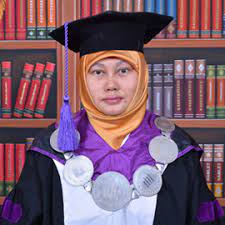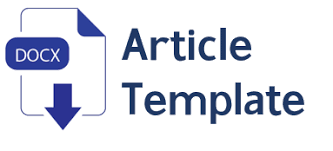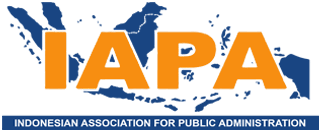MUSEUM NASIONAL PROGRAM BELAJAR MENARI ONLINE DURING THE COVID-19 PANDEMIC THROUGH INSTAGRAM
DOI:
https://doi.org/10.30997/jsh.v14i1.6793Keywords:
Content, Instagram, Museum, Belajar MenariAbstract
Museums are the most representative example of cultural production. Although social media has triggered the attention of scholars, no previous study has classified the main ways in which social media affect museums. Museums must adapt to changing practices and technologies to remain relevant in society. Meanwhile, no transformation has been more visible than the emergence of digital technology such as social media. To preserve Indonesia's indigenous culture, Museum Nasional held a program called “belajar menari” online. This was done online due to the Covid-19 pandemic which not only hit Indonesia but also the world. In Indonesia, during covid-19 pandemic, society is required to #stayathome by the Government. To find out how the contents of the Museum Nasional’s Instagram became an e-publication, the researchers compiled data about the museum program “belajar menari” online during July to September 2021 period. The research aimed to explore Instagram content as a medium of historical education. To define the message's features, a qualitative descriptive content analysis was used as the research approach. The result of this research indicated that this program can indirectly increase the sense of nationalism as well as preserve Indonesian culture.
References
Aerni, J., & Schegg, R. (2017). Museums ’ use of social media Results of an online survey conducted in Switzerland and abroad. 1–33.
Banun, L. (2018). Indonesia, Negara Adidaya Kebudayaan. Kementerian Pendidikan Dan Kebudayaan Republik Indonesia. https://kebudayaan.kemdikbud.go.id/indonesia-negara-adidaya-kebudayaan/
Brumann, C. (2020). Cultural Heritage. International Encyclopedia of Human Geography (Second Edition).
Columbia University’s Mailman School of Public Health. (2017). Content Analysis. Columbia University’s Mailman School of Public Health. https://www.publichealth.columbia.edu/research/population-health-methods/content-analysis
Eriyanto. (2013). Analisis Isi: Pengantar metodologi untuk penelitian ilmu komunikasi dan ilmu sosial lainnya. Kencana Prenada Media Grup.
Fauzia, I. (2018). Temu Topeng Malang, Tari Topeng Bapang Diperdebatkan. AKURAT.Co. https://akurat.co/temu-topeng-malang-tari-topeng-bapang-diperdebatkan
Franchi, E. (2017). What is Cultural Heritage? Smart History: The Center for Public Art History. https://smarthistory.org/what-is-cultural-heritage-2/
Kementerian Pendidikan dan Kebudayaan Republik Indonesia. (2021). Instagram’s account of Museum Nasional Indonesia. https://www.instagram.com/museum_nasional_indonesia/
Kolay, S. (2016). Cultural Heritage Preservation of Traditional Indian Art through Virtual New-media. Procedia - Social and Behavioral Sciences, 225(November 2015), 309–320. https://doi.org/10.1016/j.sbspro.2016.06.030
MuseumNasional. (2020). About the Museum Nasional. https://www.museumnasional.or.id/tentang-kami
Thwaites, H., Santano, D., Esmaeili, H., & See, Z. S. (2019). A Malaysian cultural heritage digital compendium. Digital Applications in Archaeology and Cultural Heritage, 15(January), e00116. https://doi.org/10.1016/j.daach.2019.e00116
Uljanatunnisa, U., Ayuningtyas, F., & Sevilla, V. (2020). Using Instagram Museum Nasional as a Historical Education Media through e-Publication to Engage Audiences. Library Philosophy and Practice, December.
UNESCO. (2021). Cultural Heritage. https://en.unesco.org/
Vassiliadis, C. A., & Belenioti, Z. C. (2017). Museums & cultural heritage via social media: An integrated literature review. Tourismos, 12(3), 97–132.
Visser, J. (2011). From social media to Social CRM. Business. http://public.dhe.ibm.com/common/ssi/ecm/en/gbe03391usen/GBE03391USEN.PDF
Downloads
Published
How to Cite
Issue
Section
License
Copyright (c) 2023 Jurnal Sosial Humaniora

This work is licensed under a Creative Commons Attribution-ShareAlike 4.0 International License.
Authors submitting manuscripts must understand and agree to copyright the manuscript of the article was transferred to OJS Djuanda University. All rights reserved. The copyright release statement for the Journal of Social Humanities is set out in the Agreement Transfer of Copyright. This work is licensed under Creative Commons Attribution-ShareAlike (CC BY-SA) version 4.0 where Author and Readers can copy and redistribute material in any media or format , as well as mixing, modifying and building materials for any purpose, but they must provide appropriate credit (citing articles or content), provides a link to the license, and indicates when changes have been made. If you mix, modify, or develop, the materials you have to distribute your contributions are under the same license as the originals.
















